Guest Post by Eric Peters

This is the time of year when we’re forced to reset our clocks – Daylight Savings Time. There’s something else that needs re-setting, too.
Our frames of reference for cars.
Let me explain – using some specifics:
There is no longer much amenity difference between “luxury” cars and other cars . . .
There is more price difference than there has ever been.
You can spend as little as $13,000 or so for a new car – or six figures plus. That gap is much wider than the price gap between a 1972 Pinto and a 1972 Sedan deVille.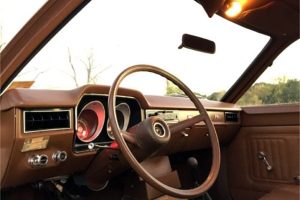
But today’s $13k car is a lot closer to the six figure car in terms of amenities.
Both will come standard with air conditioning – which was hugely luxurious (and almost always extra-cost, if it was even offered) in other than luxury cars back in ’72. Today’s six figure car may have “three zone” and climate control AC and nicer vents and probably a graphic/LCD display showing you how the air is flowing.
But you’re just as cool inside the $13k car.
Which will also come standard with power windows and locks, at the least – and will probably come standard with intermittent wipers, cruise control and stereo far better than anything available in any Cadillac back in the ‘70s or even the ‘80s and possibly, the ‘90s, too.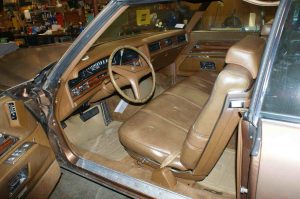
It will have Bluetooth wireless and probably an LCD touchscreen interface. Not even a Rolls had sucj things back in ’72… or ’92.
By the time you get to around $35,000 or so, there is even less meaningful difference. You will usually find heated (and cooled) leather seats in the $35k car; many also have heated steering wheels. There will be climate control AC and cruise control – the latter often adaptive (it slows and accelerates the car automatically) just as in the six-figure car.
There will be an excellent stereo. And really good brakes – always four wheel disc brakes – behind aluminum wheels usually a minimum of 17 inches in diameter. The seats will be powered; the car will likely have at least a sunroof and possibly a full-length panorama sunroof. Most 2019s at this price point also have configurable ambient interior LED lighting, too – a thing only the six figure cars had until about five or so years ago.
So what is the difference – other than the price?
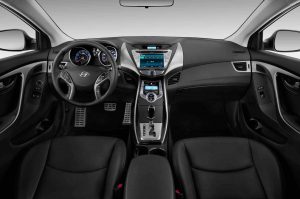
The main one is power/performance – but even that gap is narrowing. It is becoming hard to find an objectively under-powered new car. There are simply some cars that are more powerful than others.
At the $35k price point, virtually any car – regardless of make or model – will be capable of getting to 60 MPH in six seconds. Many do it in less. That would have been considered high-performance – bordering on exotic – as recently as the mid-1990s.
Almost all “economy” cars can get to 60 in about eight seconds. Some less. Most current family sedans can be ordered with engines that make close to – or more than – 300 horsepower.
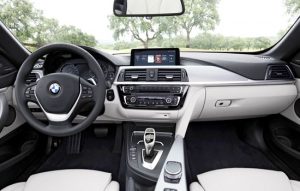
In a nutshell you reach a point of diminishing returns after a certain point. The buyer who spends $60k on a car vs. the buyer who spent $35k mostly spent more money. The $35k isn’t “roughing it” in comparison with the $60k car – and neither is the guy driving the $13k car.
There is value in exclusivity, which is part of what you get when you spend more than most other people do on their cars. But it’s not quite the same as it was back in ’72 – when a Sedan de Ville rolled up next to a Pinto at a light – especially on a really hot summer day.
The car’s gadgets will get old long before the car does . . .
A five year old car with 60,000 miles on it is a car that can usually be counted on to provide reliable transportation for another ten years and 100,000 miles-plus before it begins to become unreliable.
Drivetrains – and bodies – are easily twice as durable and so twice (or more) as long-lived as what used to be the expected norm.
But the gadgets are another matter.
Think how quickly your new smartphone becomes old. Most people get a new one after as little as two or three years because technology changes that fast. You can only update and download so much. It gets to be either not worth the expense – or not even possible. So you toss the old phone and get a brand-new one.
Cars are becoming smartphones that take you places.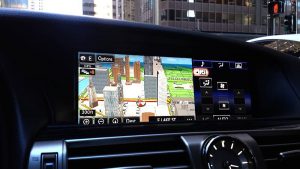
Whatever is “state of the art” in terms of things like the LCD touchscreen it comes with and other such will be as dated as MySpace five years from now. But it’s harder to throw away a car you sent $35k on (or even $13k) and just buy a new one.
It is very likely that in the future, many interfaces will become modular – plug and play. New cars may even just come with ports, into which your latest accessory (such as an iPad) can be plugged.
That way, you won’t have to throw away the car to throw away the dated tech.
You literally do fix flats . . .
Fewer and fewer new cars come with any kind of spare tire – even a space saver – not because having a spare is unnecessary but because it has become very necessary to achieve compliance with the federal government’s fuel economy fatwas. One way to do that is to shave weight off the car – and a spare tire (plus jacking equipment) in the trunk is easily dispensed with deadweight.
Until, of course, you need it.
What then? You fix the flat tire.
Many new cars come with a tire repair kit in lieu of the spare. It consists of a small air pump and an aerosol can of goop. The goop goes into the flat tire (via the air stem) and then you plug the mini-compressor into the accessory 12V power point (modern PC cars no longer come with cigarette lighters) and refill the now-hopefully-sealed (by the goop) tire and are back on the road without having to get dirty changing a tire.
The bad news is that the repair kit only works if the tire is repairable.
In the case of damage to the sidewall – or the wheel – it won’t be. And then you will only be getting back on the road when someone brings you a spare.
Or, gives you a ride.




What is worse so called ‘luxury brands’ don’t even offer more ‘room’ than mid range cars. I have a silver Mazda 6 that cost $30,000. A neighbor paid a lot more for his silver Jaguar but it looks almost identical to my car and has no more room than mine but its got heated seats and steering wheel which comes in real handy in Sarasota, Florida!
Used to be if you bought a Jaguar sedan you got a BIG car. Now because of CAFE regs they’ve shrunk the auto and they can’t even give it the distinctive look of a Jaguar. Every car has to be similarly shaped for fueleconomy reasons even though if you can afford a new Jaguar, Mercedes, Audi etc you really don’t care about fuel economy.
Virtually every car looks the same these days too. I guess you pretty much have to build them that way in order to maximize aerodynamics for fuel economy, etc. along with crash bullshit. I saw a Jaguar the other day and it looked like every other car on the road. Nothing like the old classic “E” type that truly made a statement. I am surprised that there is not a serious market for vehicle badges. You could easily pass off nearly any car as any other car with a bit of chrome badging. Used is the only way to go.
The two seat convertibles still reek of ‘my car is superior to yours’ but the sedans and, Jesus, the luxury SUVs are simply absurd.
Exactly whT obama wanted. Everybody is the same, gets the same, looks the same. The only difference would be if you are part of the elite (power position within the govt). They want to be gods. And making us all look and feel the same. Is part of that. They will have armed body guards and rules that dont apply to them and that is what separates them. Like them pulling up in a fancy car to a red light next to that pinto. They want all the flash. Bastards.
Love my 1996 Eagle Vision tsi….paid 25K cash ………..